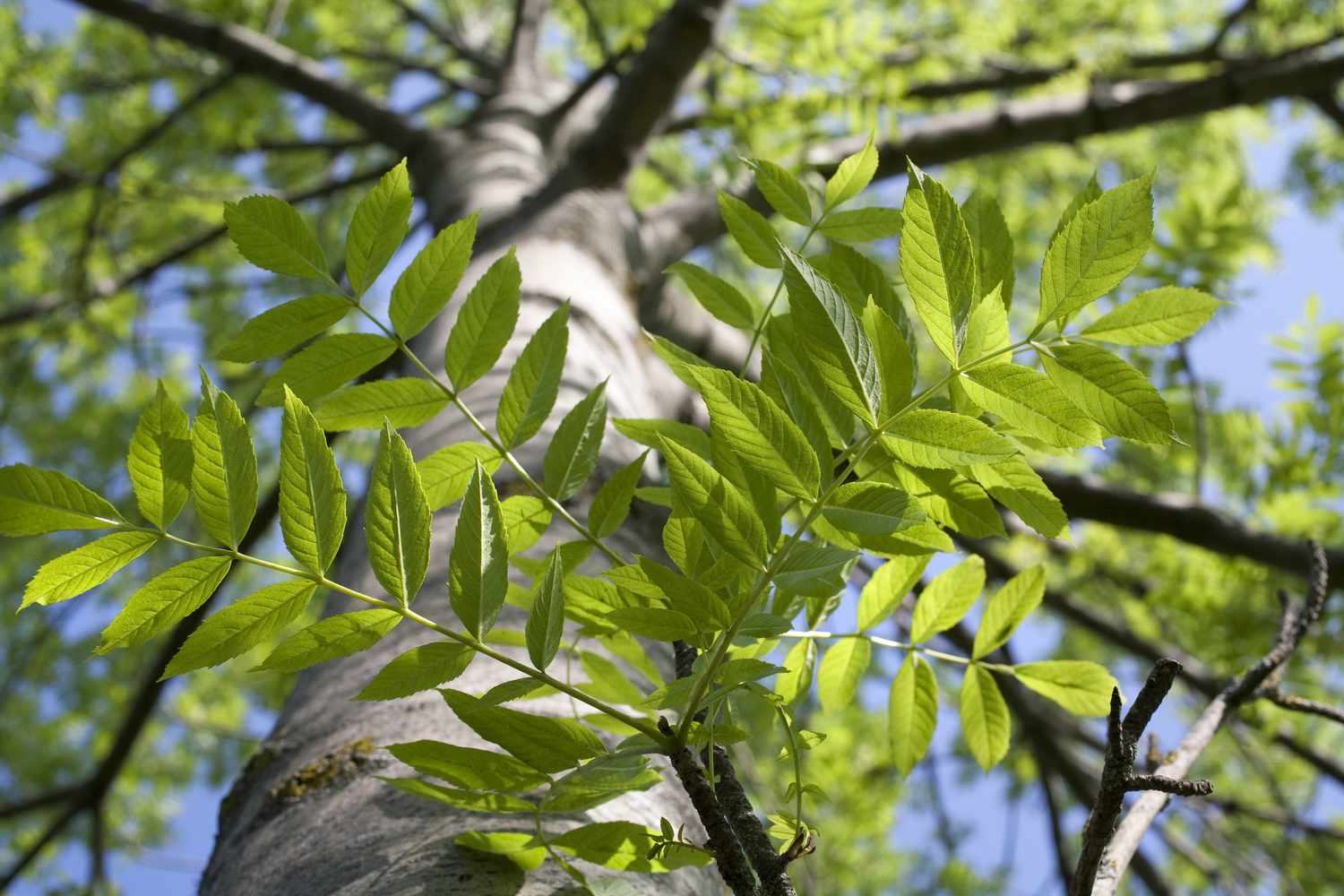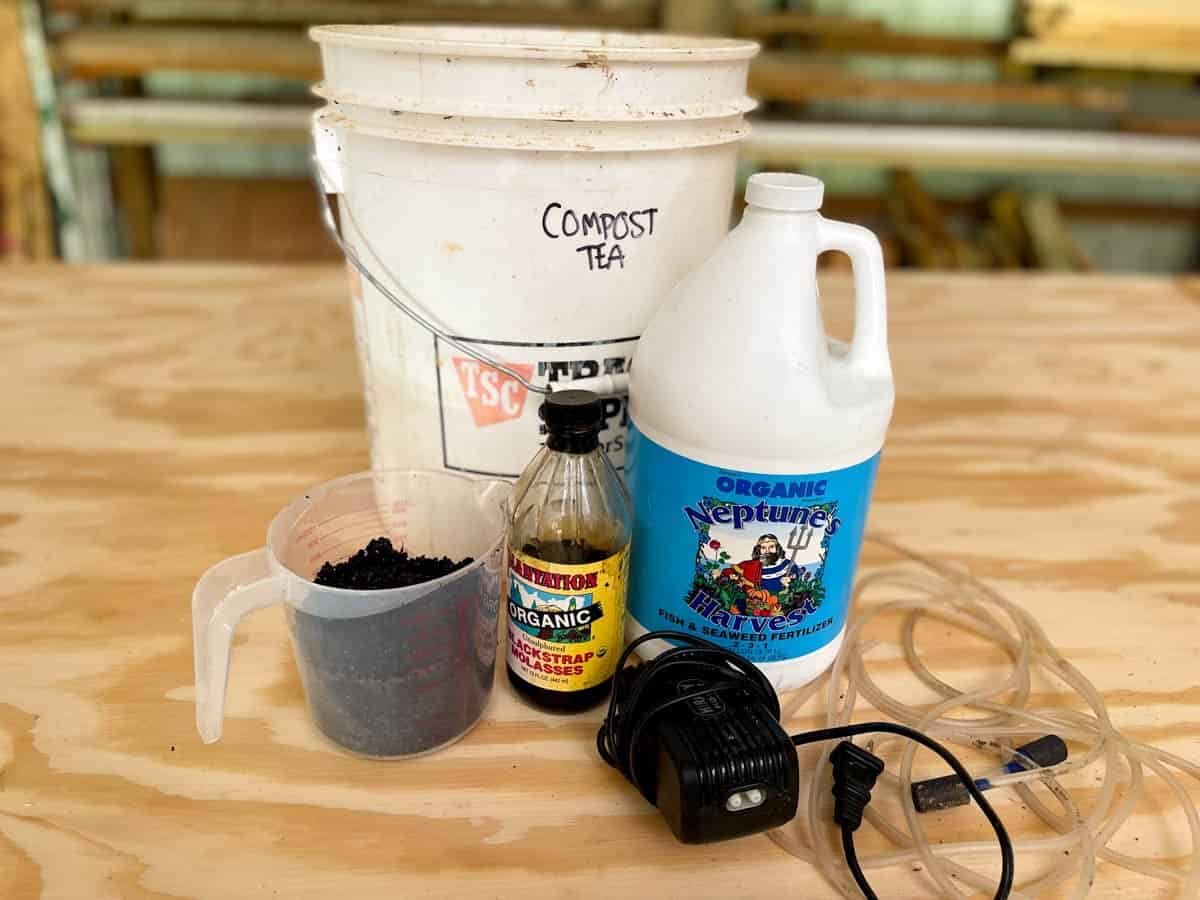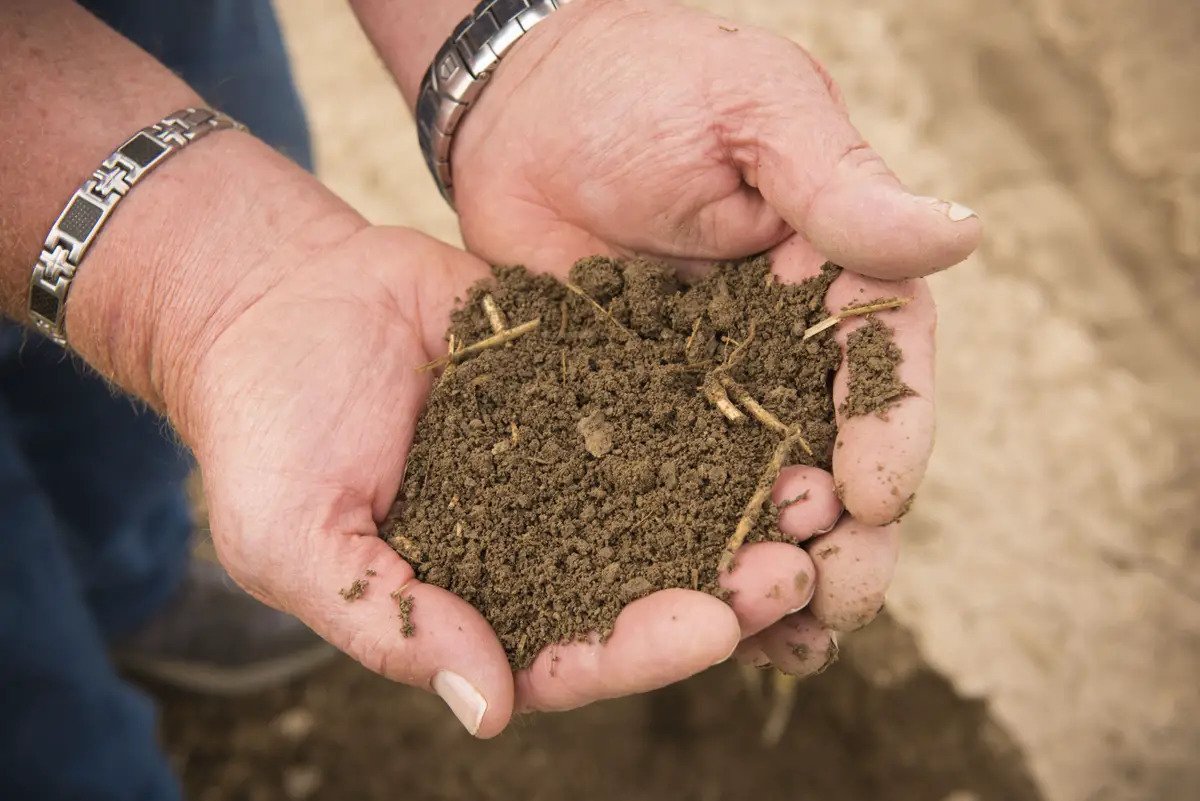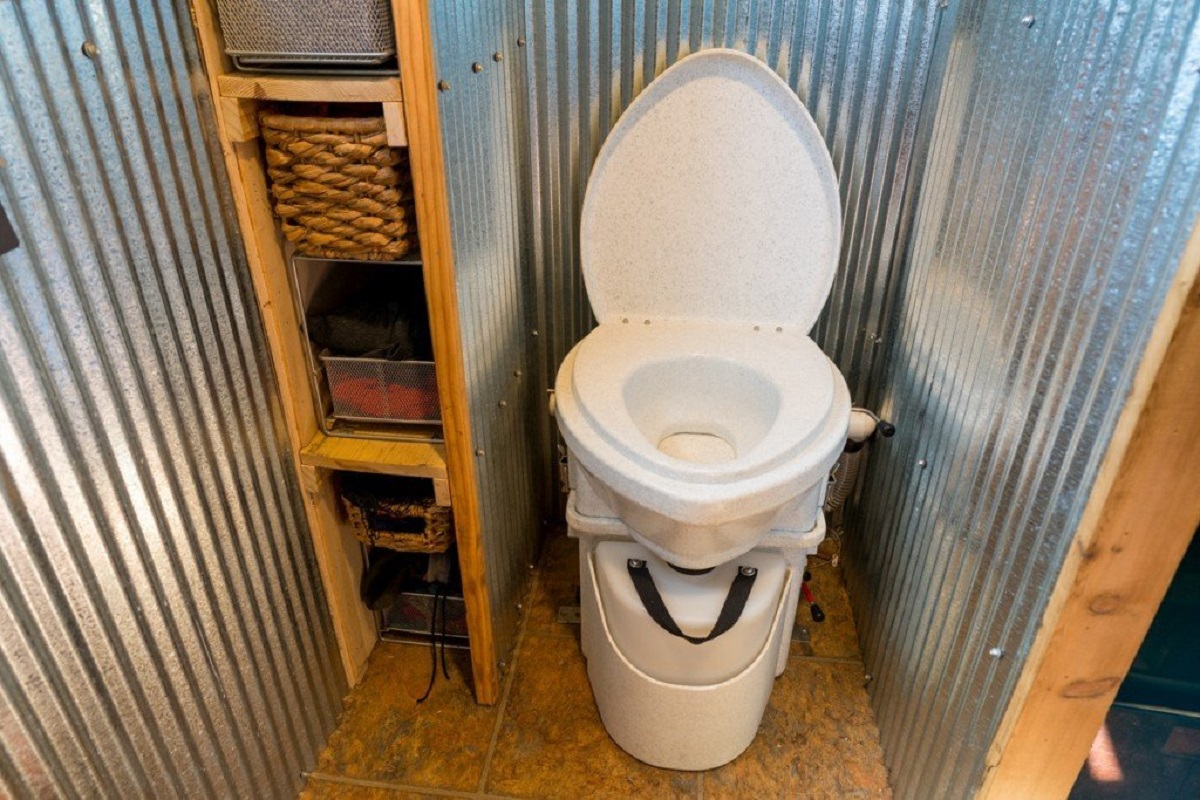Home>Gardening Tips and Tricks>Eco-Friendly Gardening>How Much Wood Ash To Add To Compost


Eco-Friendly Gardening
How Much Wood Ash To Add To Compost
Modified: January 22, 2024
Discover the perfect amount of wood ash to add to your compost for eco-friendly gardening. Make the most of this natural resource to enhance your soil and plant health.
(Many of the links in this article redirect to a specific reviewed product. Your purchase of these products through affiliate links helps to generate commission for Chicagolandgardening.com, at no extra cost. Learn more)
Table of Contents
Introduction
Welcome to the world of eco-friendly gardening! If you’re passionate about sustainable practices and want to make a positive environmental impact, then incorporating eco-friendly gardening techniques into your routine is a fantastic place to start. One essential aspect of eco-friendly gardening is composting, which involves recycling organic materials to create nutrient-rich soil for your plants. And when it comes to composting, adding wood ash can be a game-changer.
Wood ash is the residue left behind after burning wood, and it contains many beneficial elements that can enhance the quality of your compost. From providing essential nutrients to improving the pH balance of the soil, wood ash is a fantastic addition to any compost pile.
In this article, we will delve into the benefits of adding wood ash to your compost, discuss general guidelines for incorporating it effectively, and explore the factors that determine the right amount of wood ash to use. We will also provide step-by-step instructions on how to incorporate wood ash into your compost pile safely and efficiently.
Whether you’re a seasoned gardener or just starting out, understanding how wood ash can enrich your composting process will help you achieve thriving, eco-friendly gardens. So, let’s dig in and discover the wonders of adding wood ash to your compost!
Benefits of Adding Wood Ash to Compost
Adding wood ash to your compost pile offers numerous benefits that can enhance the overall quality of your compost and, in turn, benefit your plants. Here are some key advantages:
- Nutrient Boost: Wood ash is a rich source of essential nutrients such as potassium, calcium, and magnesium. These nutrients are vital for plant growth and development, promoting strong root systems, robust foliage, and vibrant blooms.
- pH Regulation: Wood ash has alkaline properties that can help balance the pH levels of acidic soils. By incorporating wood ash into your compost, you can prevent your soil from becoming too acidic, creating a more favorable environment for a wide range of plants.
- Improved Soil Structure: Wood ash acts as a soil conditioner, improving its texture and structure. It helps to loosen compacted soil, allowing better drainage and root penetration. This is especially beneficial for heavy clay soils that tend to retain water.
- Enhanced Microbial Activity: Wood ash contains trace elements that are beneficial for soil microorganisms. These microorganisms play a vital role in breaking down organic matter and releasing nutrients, resulting in better decomposition and nutrient availability for plants.
- Repels Pests: Wood ash has natural pest-repellent properties, acting as a deterrent for slugs, snails, and certain insects. By adding wood ash to your compost, you can help protect your plants from common garden pests.
- Reduces Odors: Wood ash has the ability to absorb and neutralize odors in the compost pile. This can be particularly useful if you have a compost bin or pile in close proximity to your living space.
Overall, incorporating wood ash into your compost offers a myriad of benefits that contribute to healthier, more productive gardens. By utilizing this eco-friendly practice, you can create nutrient-rich compost that will nourish your plants, improve soil quality, and reduce the need for chemical fertilizers.
General Guidelines for Adding Wood Ash to Compost
While adding wood ash to compost can be highly beneficial, it’s essential to keep a few guidelines in mind to ensure you use it correctly. Here are some general recommendations:
- Use Ash from Untreated Wood: Only use wood ash from untreated wood sources. Avoid using ash from coal, charcoal, or wood that has been treated with chemicals or painted.
- Collect the Ash Properly: Collect the wood ash by allowing your fireplace or wood-burning stove to cool down. Once cooled, carefully scoop and store the ash in a dry, covered container.
- Mix Ash with Compost Materials: Incorporate wood ash with other compostable materials to prevent clumping and ensure even distribution of nutrients throughout the compost pile.
- Avoid Excessive Use: While wood ash offers many benefits, using it in excess can have adverse effects. Aim for a balanced mix of compost materials, including wood ash, to maintain the optimal nutrient balance.
- Test Soil pH Regularly: To determine the right amount of wood ash to add, regularly test the pH levels of the soil. This will help you gauge if your soil is acidic and in need of wood ash for pH regulation.
- Avoid Using Wood Ash on Acid-Loving Plants: Acid-loving plants, such as rhododendrons and blueberries, prefer acidic soil. Therefore, it’s best to avoid using wood ash on these types of plants to prevent altering their preferred pH levels.
- Apply Ash in Thin Layers: When adding wood ash to your compost pile or directly to the soil, apply it in thin layers to avoid overwhelming the composting process or the plants’ root systems.
- Maintain Proper Moisture Levels: Ensure that your compost pile or soil is adequately moist before adding wood ash. This will help the ash distribute evenly and prevent it from compacting or forming clumps.
By following these general guidelines, you can effectively incorporate wood ash into your composting routine and optimize its benefits for your plants and soil. Remember to monitor the pH levels, use wood ash in moderation, and adapt your usage based on the specific needs of your garden.
Determining the Right Amount of Wood Ash
When adding wood ash to compost, it’s crucial to determine the appropriate amount to use for optimal results. The right amount of wood ash depends on various factors, including the size of your compost pile, the composition of other organic materials, and the desired pH levels of your soil. Here are some guidelines to help you determine the right amount:
- Perform a Soil Test: Conduct a soil test to assess the pH levels of your soil. This will provide a baseline to determine if your soil is acidic and how much wood ash is needed to neutralize it.
- Consider the Size of Your Compost Pile: Larger compost piles can handle more wood ash, while small piles require a proportionately smaller amount. As a general rule, aim for a maximum of 5% wood ash by volume in your compost mixture.
- Ongoing Monitoring: Regularly monitor the pH levels of your soil and adjust the amount of wood ash accordingly. Aim for a pH level between 6 and 7, as this range is suitable for most plants.
- Assess the Composition of Other Organic Materials: Consider the nutrient content of the other organic materials in your compost pile. If they are already rich in potassium, calcium, or magnesium, adjust the amount of wood ash accordingly to avoid an excessive influx of these nutrients.
- Start Small and Gradually Increase: If you are unsure about the right amount to add, start with a small quantity of wood ash and observe the results. Gradually increase the amount while monitoring the pH and the overall health of your plants.
Remember that the goal is to maintain a balanced ecosystem for your plants. Adding too much wood ash can raise the pH of your soil excessively, which may negatively affect plant health. Regular monitoring and adjusting based on the specific needs of your garden will help you determine the ideal amount of wood ash to add to your compost.
Factors Affecting the Amount of Wood Ash to Add
The amount of wood ash to add to your compost is influenced by several factors. Understanding these factors will help you tailor your usage to meet the specific needs of your garden. Here are some key factors to consider:
- Soil pH: The current pH level of your soil is a crucial factor in determining the amount of wood ash to add. If your soil is highly acidic, you may need to add more wood ash to increase the pH and restore balance.
- Types of Plants: Different plants have varying pH preferences. Some plants, like blueberries and azaleas, prefer acidic soil, while others thrive in neutral or slightly alkaline conditions. Consider the pH requirements of the plants in your garden when determining the amount of wood ash to incorporate.
- Compost Mixture: The composition of your compost mixture also impacts the amount of wood ash needed. If your compost is already rich in potassium, calcium, or magnesium, you may need to adjust the amount of wood ash to prevent excessive levels of these nutrients.
- Size of Garden: The size of your garden or planting area influences the volume of compost you will need. Larger gardens may require more wood ash but be cautious not to overuse it, as excessive amounts can harm your plants.
- Climate and Weather: Environmental conditions impact soil pH over time. For example, areas with high rainfall tend to have naturally acidic soils, requiring more wood ash. Conversely, arid regions may have alkaline soils, requiring less wood ash.
- Personal Preference: Every gardener has their own preferences and goals for their garden. Some may prefer a more acidic or alkaline soil, depending on the types of plants they are cultivating. Adjust the amount of wood ash based on your personal gardening style.
Remember to regularly assess and monitor the pH levels of your soil to ensure you’re providing the right amount of wood ash for optimal plant growth. It’s essential to strike a balance and avoid overusing wood ash, as excessive amounts can lead to nutrient imbalances and negatively impact plant health.
Steps to Incorporate Wood Ash in Compost
Incorporating wood ash into your compost is a straightforward process that can greatly benefit your garden. Here are the steps to follow:
- Collect and Store Ash: Collect wood ash from your fireplace or wood-burning stove after it has completely cooled down. Store the ash in a dry, covered container to keep it dry and prevent any moisture from affecting its quality.
- Prepare the Compost Pile: If you haven’t already, establish a compost pile or bin in your garden. Layer the compostable materials, such as kitchen scraps, yard waste, and other organic matter, to create a balanced mixture.
- Add Wood Ash in Thin Layers: Sprinkle a thin layer of wood ash evenly over the compost pile. Avoid dumping a large amount in one spot, as this can lead to clumping and uneven distribution. Repeat this process for each layer of compostable materials you add.
- Mix Thoroughly: To ensure proper integration of the wood ash, use a garden fork or compost turner to thoroughly mix the compost pile. This will help distribute the ash evenly throughout the pile, promoting efficient decomposition and nutrient absorption.
- Monitor Moisture Levels: Check the moisture levels of your compost pile regularly. It should be moist like a damp sponge, but not overly saturated. Add water if it is too dry or adjust with more dry material if it is too wet.
- Continued Turning: Regularly turn your compost pile every few weeks to promote aeration and decomposition. This will help break down the organic matter and accelerate the composting process, including the incorporation of the wood ash.
- Final Maturity: Allow your compost pile to mature for several months, during which time the organic matter will decompose and transform into nutrient-rich compost. The wood ash will continue to contribute to the overall quality of the compost during this period.
- Use the Finished Compost: Once your compost has transformed into dark, crumbly soil-like material, it is ready to be used in your garden. Spread it around your plants, mix it into the soil, or use it as a top dressing to nourish and enhance the health of your plants.
By following these steps, you can effectively incorporate wood ash into your composting process and reap the benefits of nutrient-rich compost. Remember to maintain proper moisture levels, regularly turn the compost pile, and allow sufficient time for the compost to mature before using it in your garden.
Precautions and Safety Measures
While wood ash can be a valuable addition to your compost, it’s important to take proper precautions and follow safety measures when handling and incorporating it. Here are some important points to consider:
- Protective Gear: When handling wood ash, wear gloves and a dust mask to protect your skin and respiratory system. This is especially important if you have sensitive skin or respiratory issues.
- Collect Ash Safely: Allow the ash to cool completely before collecting it to avoid any risk of burns. Use a shovel or trowel to transfer the ash into a designated container for storage.
- Store Ash Properly: Store wood ash in a dry, covered container to prevent it from being exposed to moisture. Moist ash can form lumps, making it challenging to incorporate into your compost pile.
- Avoid Mixing with Chemicals: Do not mix wood ash with any chemical substances or fertilizers. This can create potentially harmful reactions or alter the nutrient balance of your compost.
- Test Ash Quality: If you are unsure about the purity of the wood ash, consider having it tested for contaminants. This is especially important if the wood came from treated sources or if you are unsure about its origin.
- Moderation is Key: Use wood ash in moderation. Excessive amounts can raise the soil’s pH levels beyond the desired range, leading to nutrient imbalances and potential harm to plants.
- Keep Away from Acid-Loving Plants: Acid-loving plants such as blueberries, rhododendrons, and azaleas prefer acidic soil. Avoid using wood ash on these plants as it can increase the pH and compromise their growth.
- Monitor Plant Health: Regularly check the health of your plants after incorporating wood ash into the compost. If you notice any adverse effects, such as leaf discoloration or stunted growth, reduce the amount of wood ash used or stop using it altogether.
- Follow Local Regulations: Be aware of any local regulations or restrictions regarding the use of wood ash in composting. Some areas may have specific guidelines or limitations, so it’s essential to stay informed.
By adhering to these precautions and safety measures, you can minimize any potential risks and ensure a safe and productive composting experience with wood ash.
Conclusion
Incorporating wood ash into your composting routine can be a fantastic way to boost the nutrient content of your compost and improve the overall health of your garden. By following the guidelines and considering various factors, you can determine the right amount of wood ash to add to your compost pile for optimal results.
From providing essential nutrients and regulating soil pH to improving soil structure and repelling pests, wood ash offers a range of benefits. However, it’s important to use it in moderation and consider the specific needs of your plants and soil.
Remember to collect wood ash from untreated wood sources, avoid excessive use, and regularly monitor the pH levels of your soil. Additionally, follow proper precautions and safety measures when handling and incorporating wood ash to ensure a safe and enjoyable gardening experience.
By implementing eco-friendly practices like incorporating wood ash into your compost, you can contribute to a healthier and more sustainable environment. So, go ahead and embrace the wonders of wood ash in your compost and witness the transformation it brings to your plants and garden.







